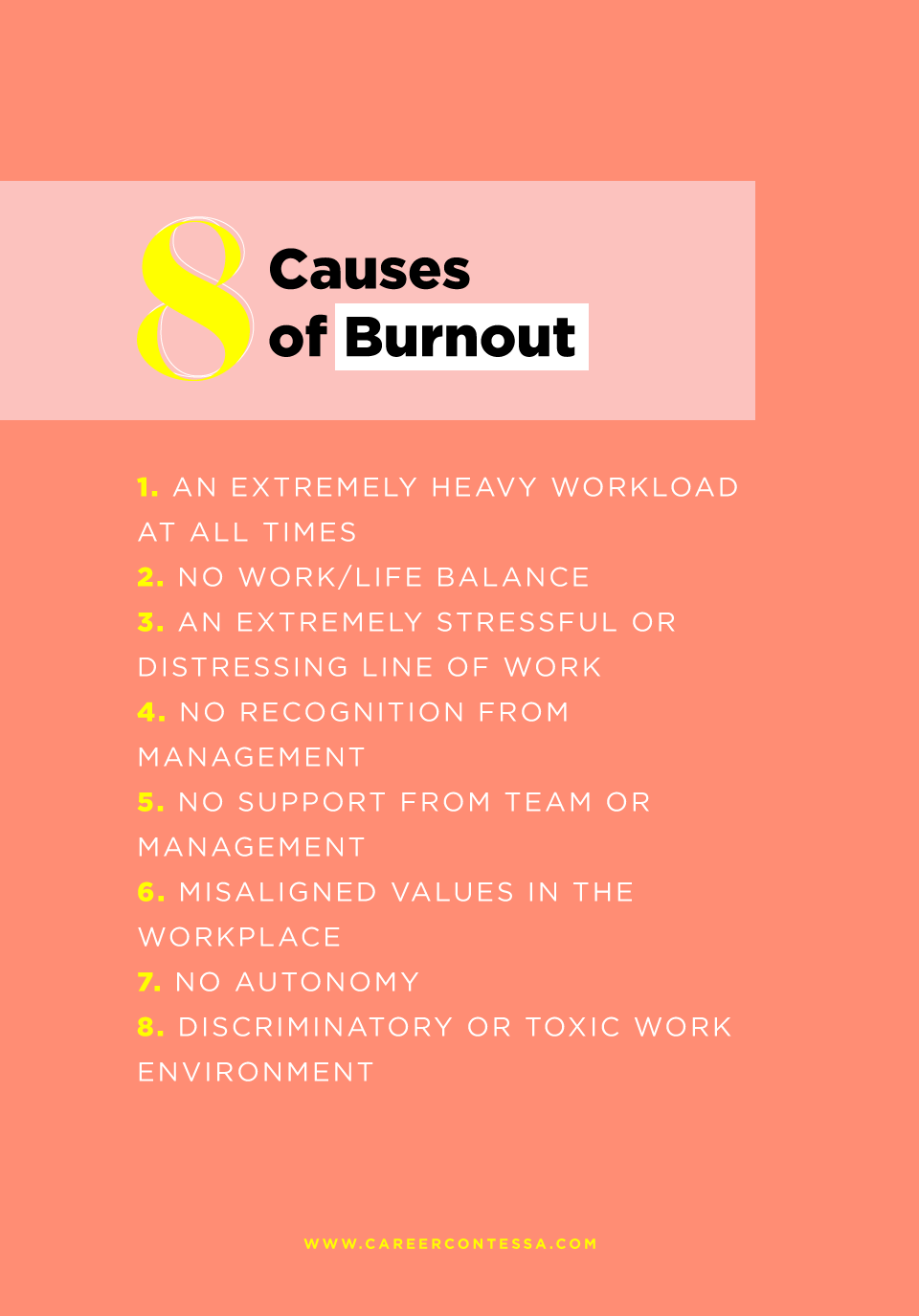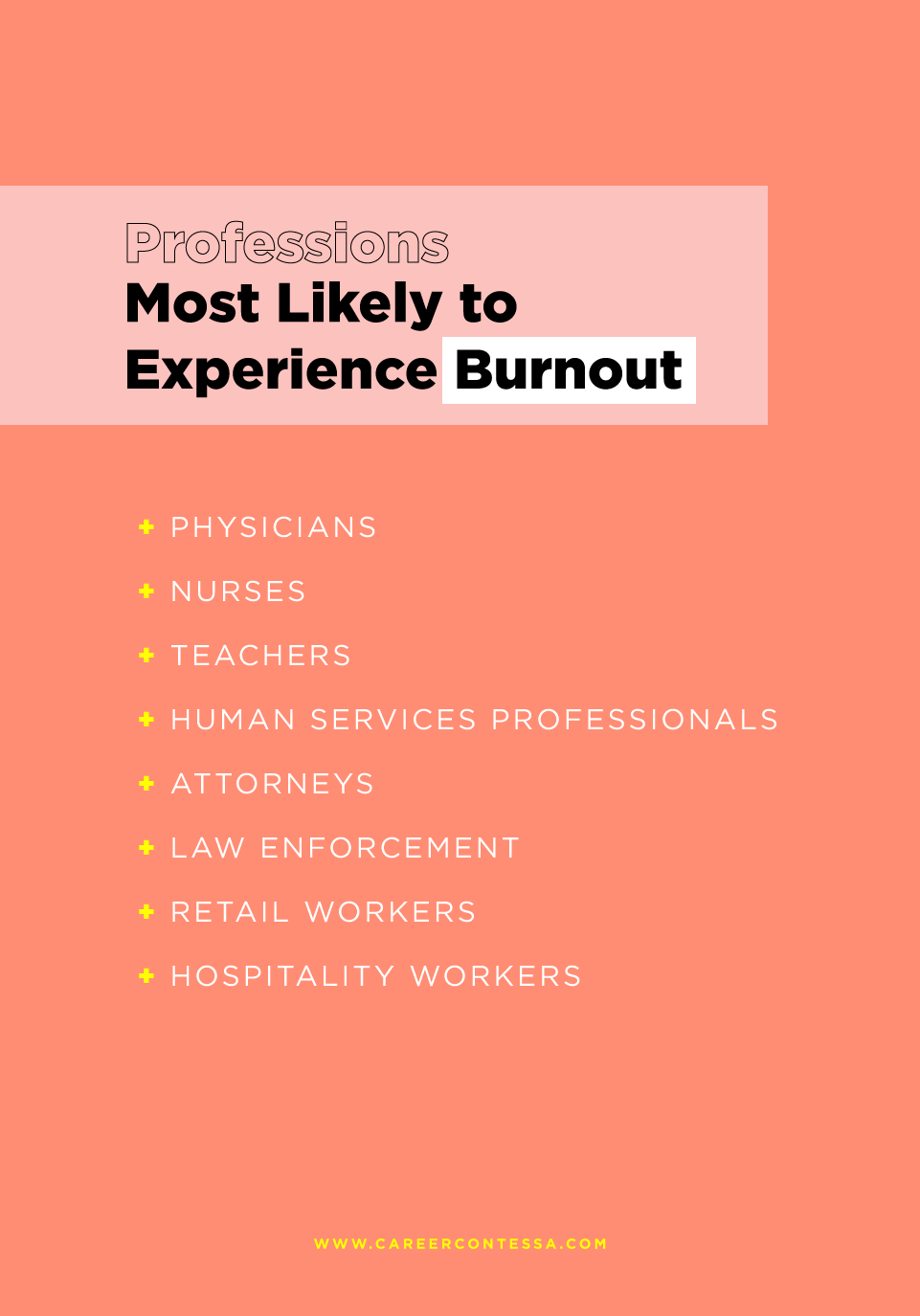Burnout is a buzzy word you've probably heard a lot about lately.
But, what is burnout? Is it simply feeling overwhelmed in life or at work? Is burnout really that serious? Well, according to the
World Health Organization, it is. Burnout was officially recognized as a legitimate medical diagnosis earlier in 2019.
According to the International Classification of Diseases (ICD-11) burnout can manifest itself through exhaustion, headaches, elevated feelings of cynicism related to a job, and reduced professional productivity. So yeah, burnout is pretty real.
So, how do we differentiate real burnout from a bad week or a challenging project? And, when we do recognize it, how do we tackle it? Let's find out.
Here's a quick guide to everything we're covering in this article. You can click on any link to jump to that section:
What is Job Burnout?
In Freudenberger's book, he defined burnout as, “the extinction of motivation or incentive, especially where one's devotion to a cause or relationship fails to produce the desired results.”
A more modern or simple way to describe this is: if you're feeling pushed to your limits with exhaustion, hate your job or start to hate a job you once enjoyed, and feel less capable of doing the work, you're starting to show signs of burnout.
We spend so much of our waking hours at work that it's not a huge surprise that the stress that contributes to burnout comes mostly from our jobs however, your lifestyle choice can also cause burnout.
People-pleasers and perfectionists are especially at a higher risk.
What Does the Research Tell Us About Burnout?
There is more and more research dedicated to studying burnout. As we mentioned, the
World Health Organization (WHO) officially recognized burnout as a legitimate medical diagnosis in 2019 and they defined it as a "state of vital exhaustion."
Then you have additional surveys like
this one from the Society for Human Resource Management (SHRM) which found that 41% of employees felt burned out from stress while they managed work and the Covid-19 pandemic. That's an increase from an
earlier survey from HR Exchange that found 23% of employees were feeling burnt out.
You might be wondering if feelings of burnout are starting to decrease as we emerge out of the Covid-19 pandemic? Sadly, a
Deloitte survey found that to be false. 77 percent of professionals surveyed said that they had experienced burnout at their current workplace, and 91 percent agreed that an unmanageable amount of stress is impacting the quality of their work.
If we want to put this research into dollars, the picture gets scarier. Job burnout is estimated to result in 120,000 deaths and approximately $190 billion in healthcare costs per year.
More recently, the
WHO updated its definition of burnout to include it being an "occupational phenomenon that occurs when chronic workplace stress has not been successfully managed."
So, there you have it. The research points to burnout being real and something to take very seriously.
What Are The Symptoms of Burnout?
According to the
ICD-11, an individual can be diagnosed with clinical burnout if they are experiencing these symptoms:
- Emotional Exhaustion: This includes feelings of energy depletion such as not having the energy to get your work done, being unable to cope, feeling drained, and extremely tired—even if you're getting enough hours of sleep each night. You might also start to neglect your personal needs and have intense feelings of depression, stress, and anxiety.
- Alienation From Your Job: This is an increased mental distance from one's job or feelings of negativism or cynicism related to one's job. You might start to view your job with frustration and the people you work with annoy you—even if they're not doing anything specific. Additionally, you start to pull back from work activities in order to "numb" these feelings.
- Reduced Work Performance: This includes reduced professional efficacy, lacking creativity, and unable to complete tasks. This might also include being less capable of managing work and life/family needs.
- Physical Symptoms: All of this can manifest into physical symptoms caused by the chronic state of stress such as chronic headaches, stomach pain, high blood pressure, heart disease, chest pain, and poor immune system.
To rule out
general anxiety or mood disorders, the World Health Organization's handbook states that these feelings should be limited—or experienced largely within—the professional arena. While, of course, work burnout can bleed into other areas in your life, clinical burnout is mainly experienced as a result of work-related stressors.
The 5 Stages of Burnout
- The Honeymoon Phase: You’re thrilled with the work you do and how you do it. You feel energized and are keeping up with your healthy habits.
- The Balancing Act Stage: Things are fine but work has lost its shine. You're keeping up your performance but spending more energy to do so.
- The Chronic Stress Stage: You start to have more "stressful" days than "not stressful" days.
- The Burnout Stage: You start to feel the mental, emotional, and physical symptoms of burnout.
- The "Enmeshment" Stage: The term “enmeshment” means that burnout has become your new default setting.
3 Types of Burnout
There are three archetypes of burnout. Do you fall into any of these categories?
Frenetic Burnout
Frenetic burnout is experienced by employees who put a ton of energy into their work in the hopes that the output will be rewarding. After a sustained period of dedicated work, the frenetic worker does not find positive outcomes.
Rather than becoming deterred from this, the frenetic worker continuously channels maximum energy into work—with little to no regard for health or work-life balance. Those who work more than 40 hours a week are more prone to suffer from this type of burnout—which usually ends in complete mental and physical exhaustion.
Underchallenged Burnout
This type of burnout occurs when an employee feels underchallenged and bored at work. Being unable to find any satisfaction in a job, the underchallenged employees find themselves in a lowered mood.
The underchallenged employee needs to identify what she loves, what she excels at, and what matters to her. From there, she can best beat this type of burnout by finding a position that offers an intersection of these passions.
Worn-Out Burnout
The worn-out employee is someone who is resigned about their work after experiencing consistent work stress over a long period of time. Having experienced negligible rewards, the worn-out employee feels disillusioned and uninspired by the job at hand.
Worn-out burnout often occurs when an employee gives her power and work to others instead of taking it on her own. If you're suffering from worn-out burnout, identify why you aren't motivated by your work. Take the steps to either reclaim your ownership or look for a position that could better fulfill you.
What Are The Risk Factors + Causes Burnout?
According to medical professionals, burnout manifests as an inability to cope with the daily demands of a job due to the nature of the job itself. Not to be confused with outside stressors, chronic anxiety, or depression, burnout is most often experienced as a direct result of the job itself.
It's true that some jobs, workplaces, and situations have a reputation for being stressful — but not every stressful job leads to burnout if it's managed successfully.
On the flip side, jobs that are not seen as "stressful" but require a lot of "passion" for the job can experience burnout as well.
- workload
- control
- reward
- community
- fairness
- values
There isn’t an absolute equation for job burnout — so the same risk factor won’t necessarily cause burnout for everyone.
Here are some other common reasons that employees experience burnout:
- An extremely heavy workload at all times
- No work/life balance
- An extremely stressful or distressing line of work
- Unrewarding or directionless work
- No recognition from management
- No support or feedback from team or management
- Misaligned values in the workplace
- Unmanageable workload
- Lack of role clarity and expectations
- No autonomy
- Unreasonable timelines
- Discriminatory or toxic work environment
How To Recognize Burnout
The
MBI survey determines burnout through a three-pronged point system as follows:
- Emotional exhaustion
- Depersonalization
- Personal accomplishment
There are several versions of the MBI survey, which work to classify burnout in different industries—this includes specialized surveys for those working in human services industries, in education, and in customer service or construction.
We always recommend seeking support from a mental health professional as well.
How To Diagnose Work-Related Burnout
We all have stressful moments at work or we might all envision
rage quitting every now and then. But remember that burnout runs deeper. If you’re wondering whether or not you’re beginning to burn out, ask yourself the following questions:
- Do you experience more bad days than good days at work?
- Is your mood low or irritable near the end of the weekend? Think Sunday Scaries.
- Are you having stomach pains? Do your neck and back hurt?
- Are you having frequent headaches?
- Are you sleeping a lot more or a lot less than usual?
- Do you struggle to focus at work or prioritize what needs to get done?
- Are you finding yourself only able to work efficiently at the last minute or against a deadline?
- Do you find yourself trying to avoid work assignments, check-ins with your boss, meetings, and just any conversation with a coworker?
- Are you constantly dreaming about quitting your job?
- Are you too exhausted to do anything fun or interesting when you’re not at work?
If you answered yes to the majority of these questions, you’re probably experiencing job burnout. Use these questions with one of the tests mentioned above to determine your burnout status.
The Consequences of Burnout
If you've subscribed to the toxic positivity that encourages us to just "hustle harder" and you're ready for a new approach, this is for you. Taking time to treat your burnout is not lazy or lacking ambition. Addressing your burnout is the only way to move forward in your career and life. Left untreated, burnout can lead to the following:
- Bad or strained work relationships (even in a new job)
- Poor sleep habits
- Self-doubt and inability to set boundaries
- Decrease in work satisfaction
- Exhaustion that doesn't go away
- Quitting your job or opting out of the workforce altogether
- Chronic illness
- Long-term health complications (even death)
Professions Most Likely To Experience Burnout
There are certain professionals who are more likely to experience burnout. In fact, the American Medical Association estimates that almost
50 percent of physicians experience symptoms of burnout—due to long hours, the stress of patient care, and administrative burdens. In fact, burnout among human services professionals is high—across the board.
Retail workers and fast-food workers also experience high levels of burnout, typically underchallenged burnout—due to low pay and repetitive tasks. Here are other professions that experience high levels of burnout.
- Physicians
- Nurses
- Teachers
- Human Services Professionals
- Attorneys
- Law Enforcement
- Retail Workers
- Hospitality Workers
How to Treat + Handle Burnout
So you think you are suffering from burnout?
We aren't physicians here at Career Contessa, so we cannot begin to dispense real advice on treating a clinical diagnosis. What we can do is lend a helping hand to take the steps to get started on your way.
While, as of the date of publishing, there is no set course for treating burnout, there are steps one can take to treat work burnout on their own. After determining that you are, indeed, experiencing burnout, you can choose to address the problem within the workplace.
Whether by communicating a tough workload to other team members, by reporting an abusive or discriminatory practice to human resources, or by speaking to management about your responsibilities, an employee experiencing burnout may be able to "fix" the problem.
Where To Find Help For Burnout
If you are pretty sure you are suffering from burnout, here are some resources to get you started on facing it.













